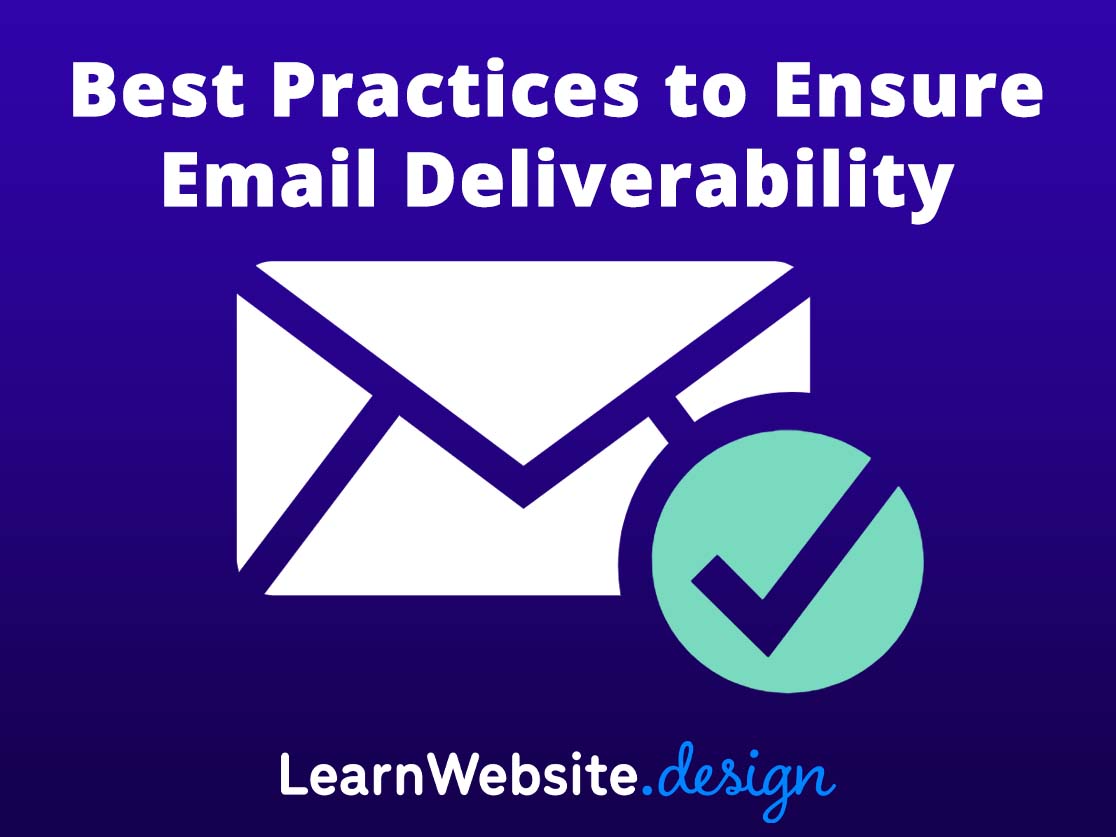How Do I Improve Email Deliverability?

Email deliverability is a hot topic lately. What is it all about, why should you care, and how do you improve it for yourself and your clients? Let’s discuss!
What is email deliverability?
Email deliverability is the ability to successfully deliver emails to recipients’ inboxes. Think about when you send an email to a client or co-worker. Do you intend for that email to reach their inbox, or would you prefer the email bounce back to you? Obviously, we expect the email to be delivered to their inbox! But is that guaranteed?
Thanks to the ubiquity of spam, emails have to go through several checkpoints on their journey to a recipient’s inbox. You might compare this to an airport. There are various security checkpoints to ensure only authorized flyers board the airplane. Likewise, emails must be checked against spam fighting technology before they board the recipient’s inbox.
That’s where an email deliverability service can help! These services can be compared to a postman whose goal is to deliver a parcel successfully into a recipient’s mailbox.
How does email deliverability benefit your clients’ websites?
In the case of a website, you can bring in an email deliverability service to ensure transactional emails are delivered, such as:
- eCommerce order notifications (e.g. new order, refunded order, cancelled order, order shipped)
- Administration emails (e.g. password changed, new user created, plugin updated)
- Contact form submissions
Obviously, those emails are valuable! The contact form is one of the most important elements of a website, and if you miss the form submission, you could lose out on valuable business!
How do you improve email deliverability for your clients?
The answer is two-fold: domain DNS records and 3rd party deliverability services.
First off, there are multiple DNS (Domain Name System) records (bits of information installed on a domain name) that you can use to improve deliverability:
- Help prevent spoofing and spam with SPF: Sender Policy Framework. The SPF record helps protect your domain against spoofing, and helps prevent your outgoing messages from being marked as spam.
- Increase security for outgoing email with DKIM: Use the DomainKeys Identified Mail (DKIM) standard to help prevent spoofing on outgoing messages sent from your domain.
- Increase security for forged spam with DMARC: Domain-based Message Authentication, Reporting, and Conformance (DMARC) is a standard email authentication method. DMARC helps mail administrators prevent hackers and other attackers from spoofing their organization and domain.
In addition to those domain DNS records, there are several 3rd party services you can integrate with your website. Some are free, and some have a minimal fee that increases with the volume of emails:
- SendGrid: This is one of the industry-leading services for email deliverability. Their free plan handles up to 100 emails per day. The account screen gives you analytics on all emails along with their deliverability status (opened, sent, bounced, unsubscribed, etc).
- Elastic Email: Cloudways, which we recommend for high-performance managed cloud hosting, integrates with Elastic Email to ensure deliverability. This is a server-level integration that only requires a few DNS records to install. The clients on our high-performance cloud server are already utilizing this excellent service. We briefly walk through installed Elastic Email in the Emails Lesson in Section 1!
Do you need email deliverability?
Ultimately, everyone wants their emails delivered successfully. As a responsible webmaster, you generally setup all clients for optimal email deliverability. Our recommendation is to have your clients regularly test their contact form. If they don’t receive the submission, perform an audit on their email situation to see where deliverability can be improved. As mentioned above, there are numerous ways to tighten up deliverability, and each client may require a personalized setup depending on the email server (Microsoft 365, Google Workspace, IONOS, Rackspace, etc). Each server has their own best practices to implement.
Overall, your goal is to ensure your clients properly receive all important website-related emails so your business and their business can succeed!
